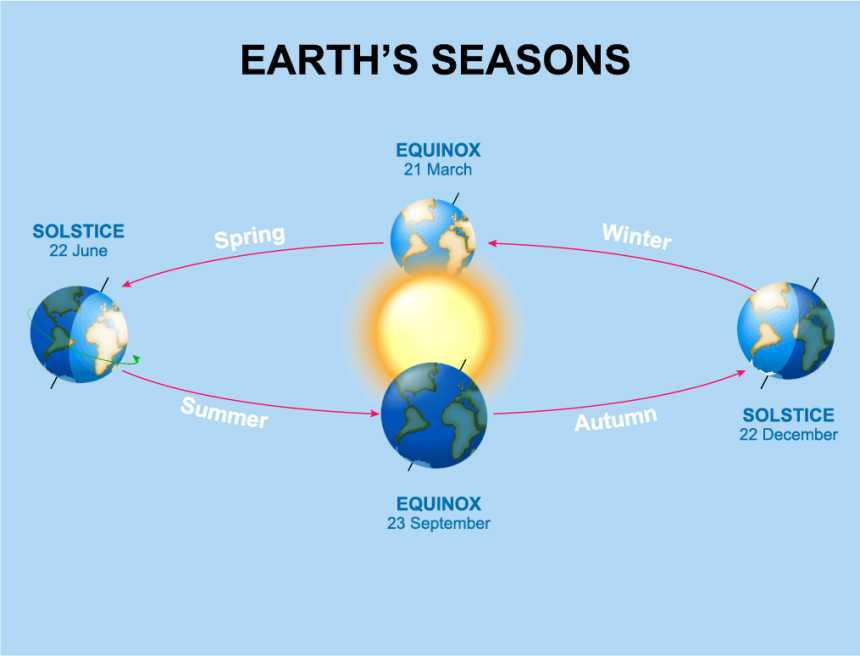As the chill of winter recedes, giving way to the gentle warmth of sunnier days, we find ourselves at a crossroads of transformation and rebirth. This metamorphosis isn’t merely a shift in climatic attire but a celestial spectacle—the vernal equinox—that has mesmerized our ancestors for eons. This event ushers in spring across the Northern Hemisphere, painting the world with the vibrant hues of flowering flora and verdant fields, signaling a fresh cycle in the seasonal quartet.
Delving into the Vernal Equinox
Originating from Latin—“aequus” meaning equal, and “nox” signifying night—the equinox is a period when daylight and nightfall embrace in equilibrium. This occurs as the sun makes its passage across the celestial equator towards the north, evenly splitting day and night across the planet. It’s not merely about the balance of light but also a significant juncture in Earth’s solar orbit, marking one of the four cardinal points that define our year, alongside the summer solstice, the autumnal equinox, and the winter solstice.
The Cultural and Historical Tapestry of the Vernal Equinox
The vernal equinox is steeped in a rich tapestry of cultural and historical significance, with ancient edifices like Stonehenge and the Pyramid of Kukulcán standing as enduring tributes to humanity’s captivation with this astronomical marvel. These ancient constructions were meticulously aligned to capture the equinox sunlight, serving both as sophisticated calendars and symbols of the symbiotic relationship between the terrestrial and the celestial.
Culturally, the equinox is a symbol of regeneration and renewal. Celebrations like Nowruz and Easter, reflecting themes of rebirth and rejuvenation, are deeply entwined with the timing of the equinox, inspiring a period of introspection, renewal, and the nurturing of new aspirations.
Witnessing the Vernal Equinox
The vernal equinox beckons skygazers and nature enthusiasts alike to witness the transformation of the seasons. This time is particularly conducive to observing natural spectacles such as the aurora borealis, whose chances of occurrence are heightened by the equinox’s geomagnetic activity.
For those with a green thumb, the equinox signals the time to commence sowing, as the soil warms and days stretch longer, creating prime conditions for germination and growth. It symbolizes a time of planting both in the literal sense and the metaphorical, sowing the seeds for future endeavors and harvests.
Climate Change: An Equinox Perspective
The observance of the vernal equinox also brings to light the ongoing dialogue on climate change and its impact on traditional seasonal cycles. Shifts in phenological events, such as blooming and migration patterns, underscore the disruption to natural ecosystems. The equinox, thus, serves as a poignant reminder of our intrinsic bond with nature and the imperative for conscientious environmental stewardship to safeguard these age-old rhythms for posterity.
In Conclusion: Embracing Renewal
The vernal equinox transcends its astronomical parameters, symbolizing a moment of harmony, renewal, and festivity. It reminds us of Earth’s resilience and the perennial nature of existence. As we embrace the offerings of spring, let us also pledge environmental guardianship, ensuring the legacy and equilibrium of the vernal equinox can be cherished for countless springs to come.








